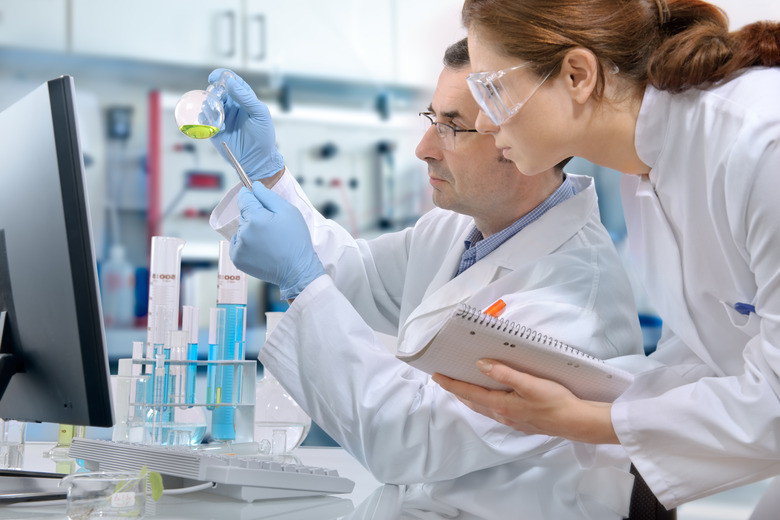How To Combine Chemical Equations
Chemical equations define how specific chemicals interact and react with one another. For simple reactions, the chemical equation is a single process, however many complex reactions occur that require the combining of multiple equations into a final equations that takes into account all the reactants and products. You combine multiple reactions into a single equation by listing all the reactants on the left side of the equation and all the products on the right side of the equation. Simplification of the overall equation will eliminate chemical species that exist on both sides of the equation without change.
Step 1
List all the equations that are involved in the overall process. These are multiple half reactions for electrochemical or oxidation-reduction reactions, dissolution equations that describe the process of dissolving a solid in a solvent, precipitation reaction and replacement reactions. Each of these individual reactions only describes a piece of the process.
Step 2
Add the right side of the individual reactions together to form the total reactant side of the process and add the individual product sides of the reactions together to obtain the total product side of the process. For example, assume a process involved the conversion of Fe2+ to Fe3+ and Cu2+ to Cu+. This redox reaction is composed of two different half reactions, Fe2+ –> Fe3+ + e- and Cu2+ + e- –> Cu+. Combine the equations to form Fe2+ + Cu2+ + e- –> Fe3+ + Cu+ + e-.
Step 3
Cancel out species that exist on both sides of the equation without change. IN the case of the example, one electron exists on both sides so they canceled each other out. This leaves the equation as, Fe2+ + Cu2+–> Fe3+ + Cu+.
Step 4
Balance the overall equation for mass and charge. Continuing the example, assume the complete reaction is Fe2O3 + Al –> Al2O3 + Fe. You need not balance the charge in this equation but it does need balancing according to mass. There must be two aluminum atoms on both sides of the equation and two iron atoms on both sides for the mass before and after the reaction to balance. The final balanced equation is Fe2O3 + 2 Al –> 2 Fe + Al2O3.
Cite This Article
MLA
Lancaster, Sean. "How To Combine Chemical Equations" sciencing.com, https://www.sciencing.com/combine-chemical-equations-8616169/. 13 March 2018.
APA
Lancaster, Sean. (2018, March 13). How To Combine Chemical Equations. sciencing.com. Retrieved from https://www.sciencing.com/combine-chemical-equations-8616169/
Chicago
Lancaster, Sean. How To Combine Chemical Equations last modified August 30, 2022. https://www.sciencing.com/combine-chemical-equations-8616169/
